Powell speech takes center stage in Tuesday’s economic events
Investors flock to real assets as fiat erosion fears mount, AI isn’t just eating the world — it’s devouring electricity, with energy demand set to surge faster than many power grids can handle.
1. Debasement Trades
Debasement trades are driving gains in gold, silver, and bitcoin as investors move toward real assets amid growing concerns over fiat currency erosion. The yen fell on Monday after pro-stimulus lawmaker Sanae Takaichi was set to become Japan’s next prime minister. The US dollar, already down nearly 30% against bitcoin this year, remains under pressure as the government shutdown persists. The euro is also under strain as renewed political uncertainty emerges in France.

Source: Bloomberg, HolgerZ
2. The S&P 500 Priced in Bitcoin
The S&P 500 has more than doubled since 2020 in nominal terms, yet when measured against a hard asset like bitcoin, the index has lost 88% of its value.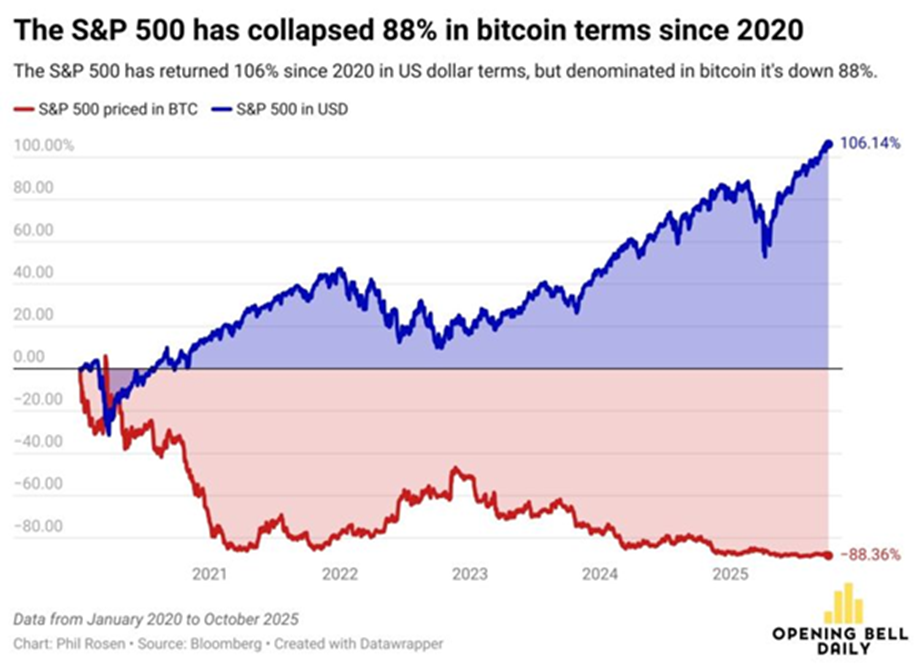
Source: Anthony Pompliano @APompliano (H/t @philrosenn)
3. The Rise of Global Money Supply
Global broad money supply rose from roughly $26 trillion in 2000 to $140 trillion by July 2025, reflecting a compound annual growth rate (CAGR) of about 6.9%. The sharpest increase occurred between February 2020 and February 2022, with a 25% surge, before it moderated to a 1.4% CAGR from 2021 to 2024. The expansion has been largely driven by China and the United States. 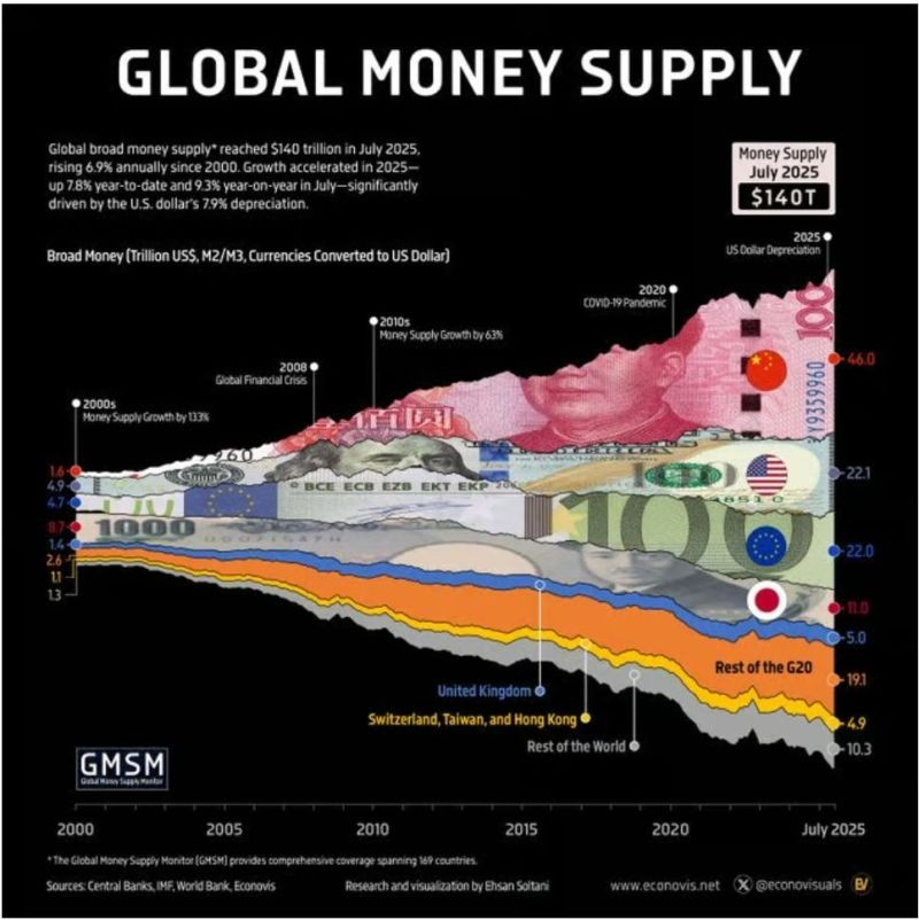
Source: Econovis.ent
4. AI Isn’t Just Eating the World, it’s Eating Our Electricity
By 2035, AI data centres could consume 1,600 TWh of electricity, four times today’s levels. Every ChatGPT prompt, every LLM token, every AI-generated image adds to this massive surge in power demand. If AI data centres were a country, they would rank as the world’s fourth-largest electricity consumer, behind China, the US, and India. The world has built the computing power; now it must build the grid to sustain it, otherwise, the AI boom could hit an energy wall, and households will feel it first.
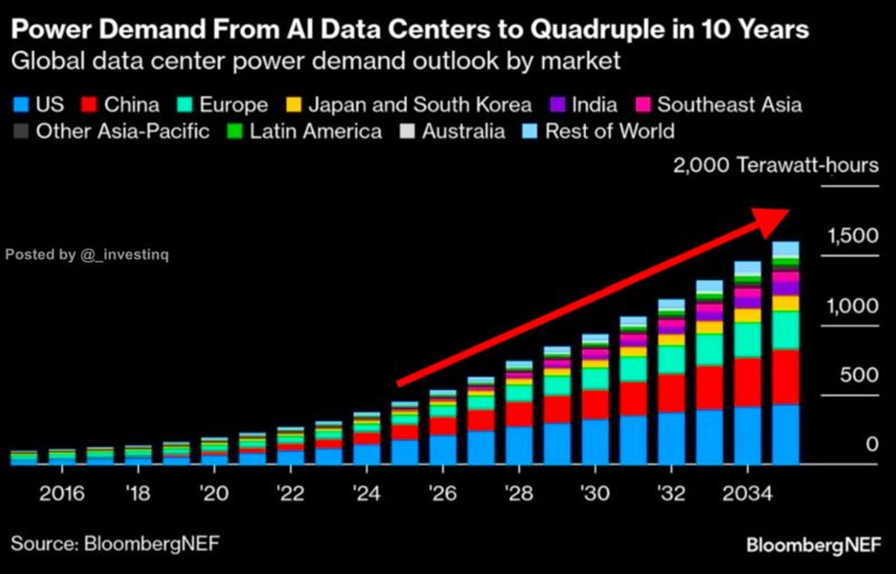
Source: Bloomberg, StockMarket.news
5. AI’s Energy Demand Is About to Go Vertical, and in Many Countries, the Grids Aren’t Ready
China is building 29 large nuclear reactors, whereas the US currently has none under construction. High costs, strict regulations, and weak market incentives have slowed progress. Smaller, advanced reactors could help, but they may arrive too late to meet AI’s rapidly growing energy needs.

Source: StockMarket.news, Goldman Sachs
6. The OpenAI Deal Framework Is Highly Concentrated Among a Few Companies
OpenAI has secured nearly $1 trillion in computing agreements this year with Nvidia (NASDAQ:NVDA), AMD (NASDAQ:AMD), Oracle (NYSE:ORCL), and CoreWeave (NASDAQ:CRWV), covering more than 20 gigawatts of AI capacity over the next decade, roughly equivalent to the output of 20 nuclear reactors. Each gigawatt of AI infrastructure costs close to $50 billion. According to the Financial Times, Nvidia accounts for $500 billion, AMD for $300 billion, Oracle for $300 billion, and CoreWeave has already disclosed over $22 billion. The scale of these commitments raises a question: where is all this money coming from? 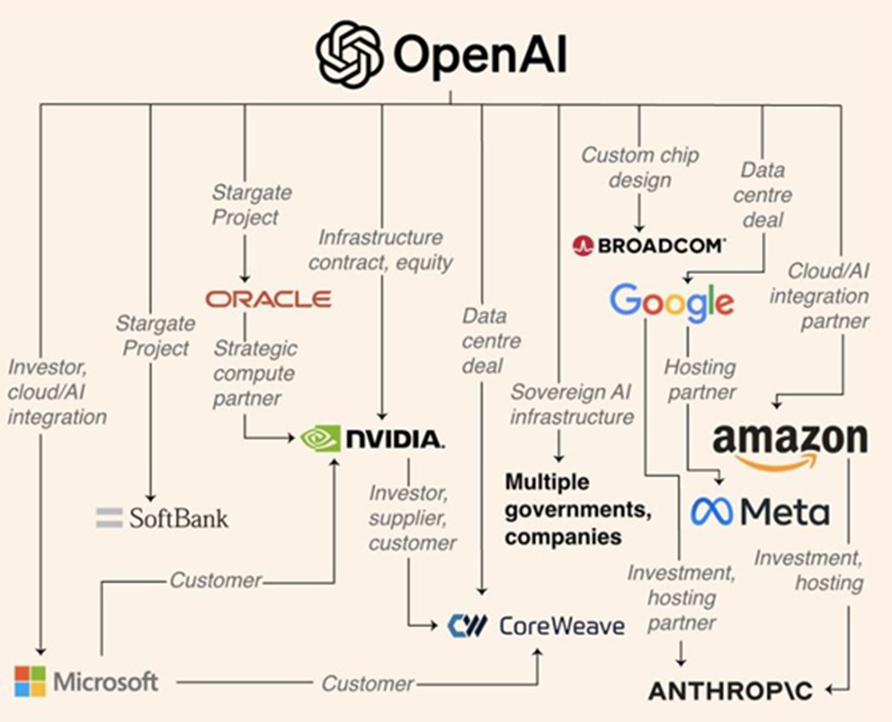
Source: Lance Roberts @LanceRoberts, Wall St Engine on X, FT
Norway’s Growing $2 Trillion Oil Empire
With a population of just over 5 million, Norway oversees the world’s largest sovereign wealth fund, valued at nearly $2 trillion. That equates to roughly $340,000 per citizen, cementing its position as one of the wealthiest nations on a per-capita basis.
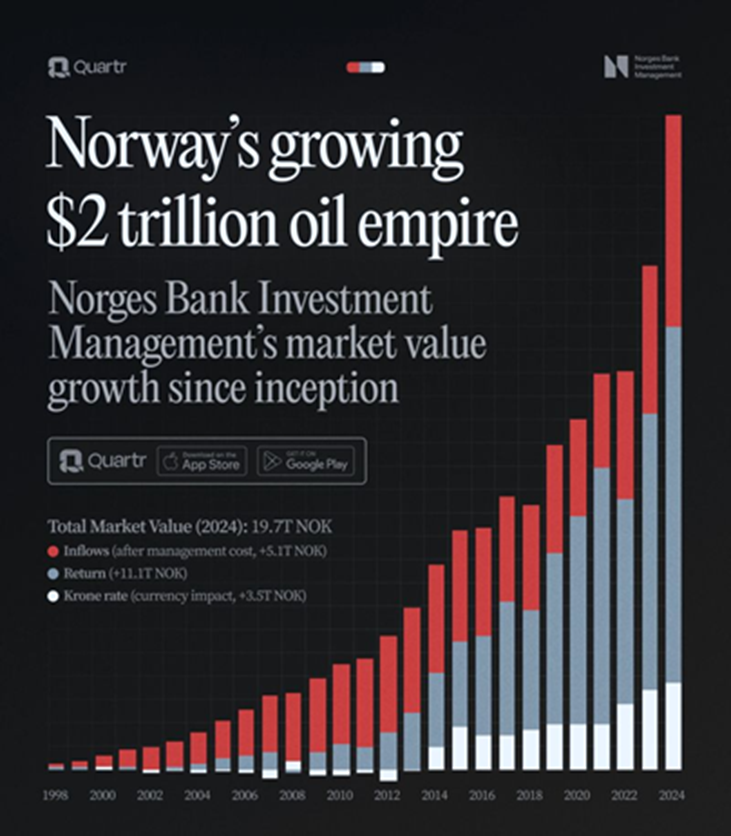
Source: Massimo @Rainmaker1973, Quartr
